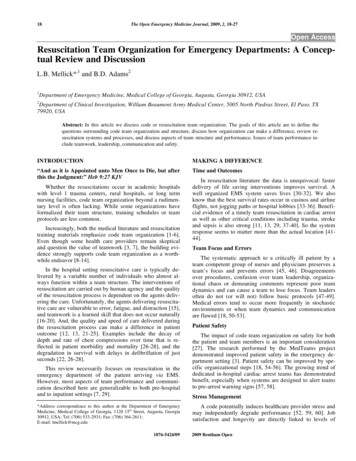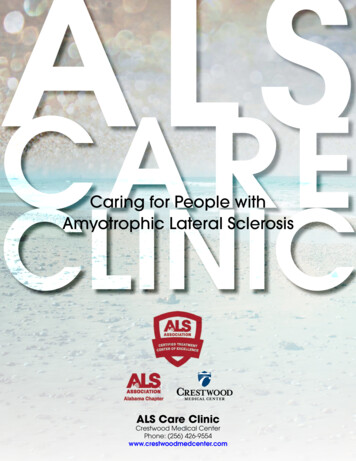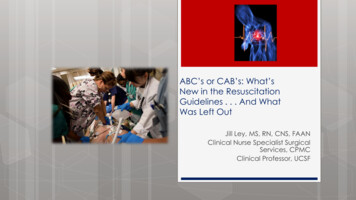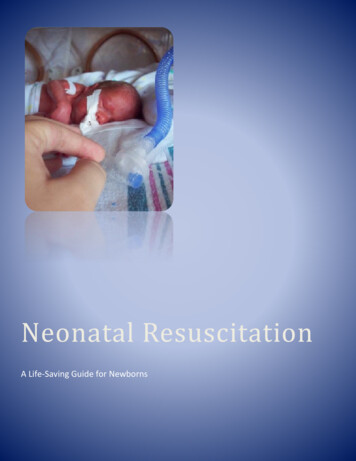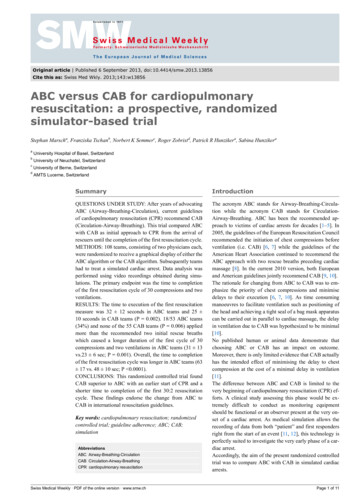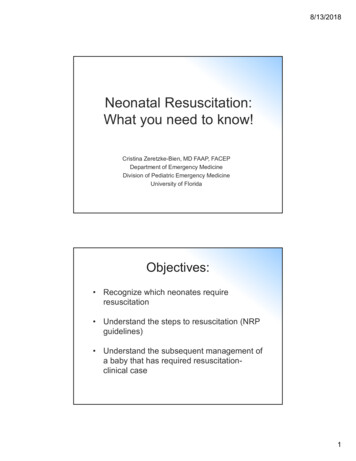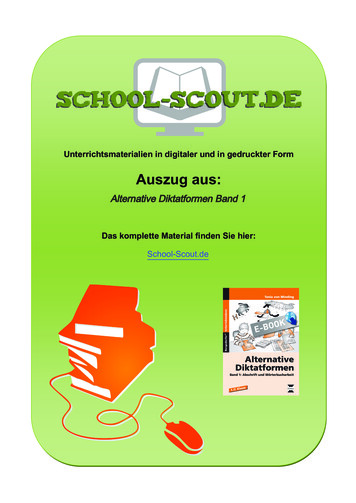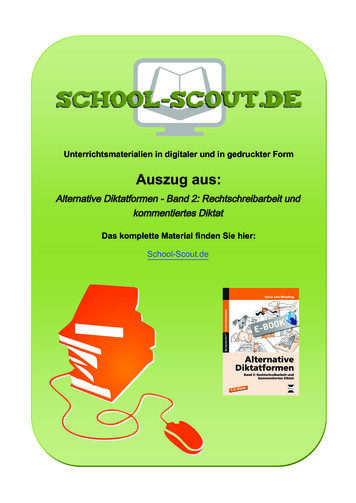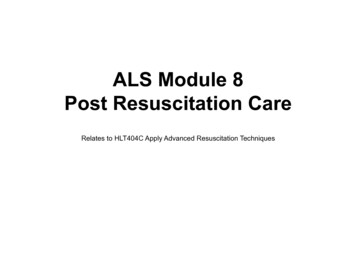
Transcription
ALS Module 8Post Resuscitation CareRelates to HLT404C Apply Advanced Resuscitation Techniques
Post Resuscitation CareAfter the return of a spontaneous circulation (ROSC),resuscitation DOES NOT STOP. It is essential tocontinue observation of airway, breathing, circulation anddisability.A comprehensive management plan including variousinterventions provided in a structured way maysignificantly influence the final outcome.The mnemonic 'ABCDEFGHI' has been outlined toassist with the process of managing a patient postarrest.
Post Resuscitation CareHypoxic brain injury, myocardial injury or subsequentorgan failure are the predominant causes of morbidityand mortality after cardiac arrests.The aims of therapy after initial resuscitation are to: Continue respiratory support.Maintain cerebral perfusion.Treat and prevent cardiac arrhythmias.Determine and treat the cause of the arrest.
Post Resuscitation CareIn addition treatable causes of cardiac arrest need to beaddressed. These aHypo/Hyperkalaemia and othermetabolic disorders including acidosisand disturbances of magnesium andcalcium4 T'sTamponade: pericardialTension pneumothoraxToxins/poisons/drugs including carbonmonoxide, and cyclic antidepressantsThrombosis: pulmonary embolus /acute myocardial infarctionA full history and examination will guide the possibleinvestigations and management.
ABC of Post Arrest CareA Airway Can it be protected if not then . Intubation and ventilation are continued in the immediatepost arrest period guided by appropriate monitoring
ABC of Post Arrest CareB Breathing Assess respiratory status – arterial / venous blood gases canbe taken to guide treatment Are they breathing? Yes-O2 therapy No-Ventilate. Ventilation to normocarbia (e.g. PaCO2 35 to 40 mmHg) isappropriate. Routine hyperventilation may be detrimental,resulting in cerebral vasoconstriction and should be avoided.
ABC of Post Arrest CareB Breathing continues Recent studies have recognized the potential harmcaused by hyperoxaemia after ROSC. Once ROSC hasbeen established and the oxygen saturation of arterialblood (SaO2) can be monitored reliably (by pulseoximetry and/ or arterial blood gas analysis), it isreasonable to titrate the inspired oxygen to achieve aSpO2 of 94 - 98%.
ABC of Post Arrest CareC Circulation It is imperative to ensure an adequate systemic arterial bloodpressure as soon as practicable after return of spontaneouscirculation. Aim for a blood pressure equal to the patient's usual bloodpressure or at least a systolic pressure greater than 100mgHg, taken every 15 minutes If the blood pressure falls, a vasopressor (e.g. adrenaline50 to 100 mcg) may be given until fluid status and the needfor intravascular volume expansion can be assessed –insertion of Central Venous Catheter (CVC) is required
ABC of Post Arrest CareD Disability A set of neurological observations (GCS) Monitor blood glucose frequently after cardiac arrest Should treat hyperglycemia ( 10 mmol/l) with insulin butavoid hypoglycemiaD Documentation Complete appropriate forms as per local protocols/guidelinesand handover is conducted with the appropriate staff
ABC of Post Arrest CareD Debrief After the resuscitation event, thank the team and ensure thatthey are supported and offered to debrief applying theprinciple of LBW: What we did well What have we have learnt What could have been done better
ABC of Post Arrest CareE Exposure Induced hypothermia has been shown to have positiveoutcomes in some patients still comatose after return ofspontaneous circulation. Hyperthermia should be avoided For further information on induced hypothermia please readthe ARC guideline 11.8 found at: - www.resus.org.au
ABC of Post Arrest CareE Electrolytes Electrolyte disorders such as hypo/hypernatraemia maycause continuing cerebral damage.F Family/Friends Making sure they have been up dated on events andoutcomes. If possible have them present during theresuscitation with a staff member assigned to them forsupportF Focused Interventions CXR - # ribs sternum, haemo-pneumothorax, ETT placementBloods - Cardiac Markers, FBC, U E’s, Glucose12 lead ECGUrinalysis
ABC of Post Arrest CareG Gadgets SpO2/ IDC/ NGT/End tidal CO2G Give comfort measuresH History including head to toe assessment Ask for more history/read notes/talk to family Look, Listen and Feel - head to toe – secondary findings andtreatmentI Investigations and inspect posterior surfaces CXR - # ribs sternum, pneumothorax, ETT placementBloods - Cardiac Markers, FBC, U E’s, Glucose12 lead ECGUrinalysis
ABC of Post Arrest CareIf not already undertaken, management should bedirected toward the treatment of underlying causes thathave been identified (e.g. correction of electrolyteabnormalities, treatment of tension pneumothorax etc.).
Post Resuscitation CareResuscitation related injuries– Rib fractures and other injuries are acceptableconsequences of CPR, as death is the alternative fromcardiac arrest.– After resuscitation all patients should be reassessedfor resuscitation-related injuries. The extent of injuriesis often underestimated by standard investigations(e.g. chest x-ray).– Other complications of resuscitation (e.g. Incorrectplacement of tubes) should be identified and treated.– Intravascular lines inserted under emergencyconditions may need to be replaced
Post Resuscitation CarePatient Transfer-Transfer or evacuation to definitive care-Important key elements to patient transport entationInteraction with relativesUtilisation of local infrastructureAdequate stabilisation good planning patientpreparation communication SUCCESS
Post Resuscitation CareNext StepsPlease now complete the online quiz by clicking on the Exit button- top right hand of your screen. This will take you back to theTopic Outline page.Scroll down to number 2 Module Assessment and complete theonline knowledge assessment.Complete the evaluation form and print off your certificate.
Post Resuscitation Care Resuscitation related injuries – Rib fractures and other injuries are acceptable consequences of CPR, as death is the alternative from cardiac arrest. – After resuscitation all patients should be reassessed for resuscitation-related injuries. The extent of in
